Discover 35 hidden attractions, cool sights, and unusual things to do in Stockholm (Sweden). Don't miss out on these must-see attractions: Vasa Museum, Stockholm Palace, and Stockholm City Hall. Also, be sure to include Skansen in your itinerary.
Below, you can find the list of the most amazing places you should visit in Stockholm (Stockholm).
Table of Contents
Vasa Museum
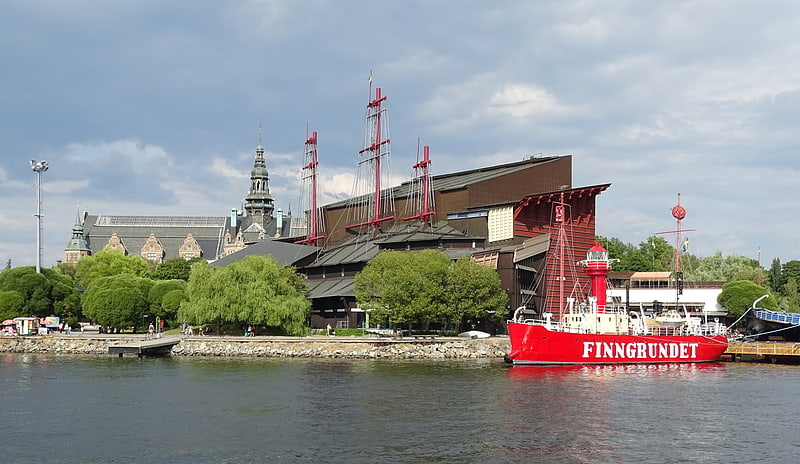
Also known as: Vasamuseet
Museum in Stockholm, Sweden. The Vasa Museum is a maritime museum in Stockholm, Sweden. Located on the island of Djurgården, the museum displays the only almost fully intact 17th-century ship that has ever been salvaged, the 64-gun warship Vasa that sank on her maiden voyage in 1628. The Vasa Museum opened in 1990 and, according to the official website, is the most visited museum in Scandinavia. Together with other museums such as the Stockholm Maritime Museum, it belongs to the Swedish National Maritime Museums.[1]
Address: Galärvarvsvägen 14, 115 21 Stockholm (Östermalm)
Stockholm Palace
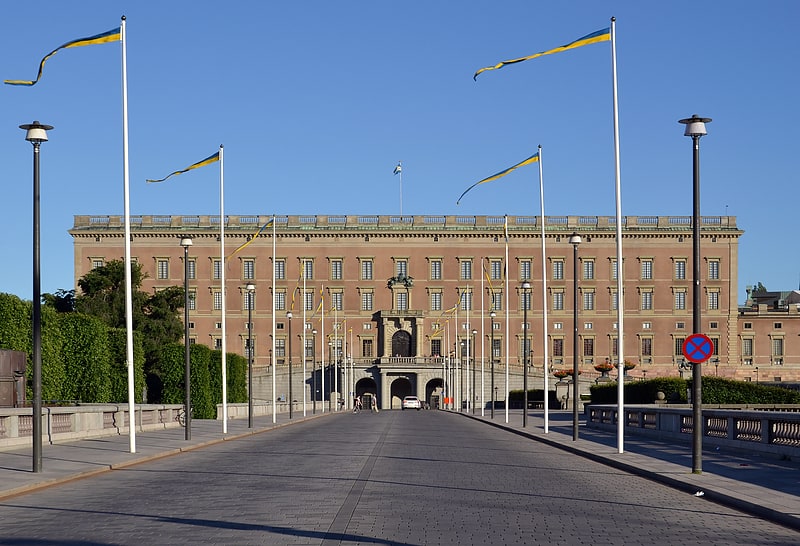
Also known as: Stockholms slott
Official residence in Stockholm, Sweden. Stockholm Palace or the Royal Palace is the official residence and major royal palace of the Swedish monarch. Stockholm Palace is on Stadsholmen, in Gamla stan in the capital, Stockholm. It neighbours the Riksdag building. The offices of the King, the other members of the Swedish Royal Family, and the Royal Court of Sweden are here. The palace is used for representative purposes by the King whilst performing his duties as the head of state.
This royal residence has been in the same location by Norrström in the northern part of Gamla stan in Stockholm since the middle of the 13th century when the Tre Kronor Castle was built. In modern times the name relates to the building called Kungliga Slottet. The palace was designed by Nicodemus Tessin the Younger and erected on the same place as the medieval Tre Kronor Castle which was destroyed in a fire on 7 May 1697. Due to the costly Great Northern War which started in 1700, construction of the palace was halted in 1709, and not recommenced until 1727—six years after the end of the war. When Tessin the Younger died in 1728, the palace was completed by Carl Hårleman who also designed a large part of its Rococo interior. The palace was not ready to use until 1754, when King Adolf Frederick and Queen Louisa Ulrika moved in, but some interior work proceeded until the 1770s. No major conversions have been done in the palace since its completion, only some adjustments, new interiors, modernization and redecorating for different regents and their families, coloration of the facades and addition of the palace museums. The palace is surrounded by the Lejonbacken and the Norrbro to the north, the Logården (known as the Shot Yard in English) and Skeppsbron in the east, the Slottsbacken and the Storkyrkan in the south, and the outer courtyard and Högvaktsterrassen in the northwest.
As of 2009 the interior of the palace consists of 1,430 rooms of which 660 have windows. The palace contains apartments for the Royal families, representation and festivities such as the State Apartments, the Guest Apartments and the Bernadotte Apartments. More features are the Hall of State, the Royal Chapel, the Treasury with the Regalia of Sweden, Livrustkammaren and the Tre Kronor Museum in the remaining cellar vaults from the former castle. The National Library of Sweden was housed in the northeast wing, the Biblioteksflygeln (the Library Wing), until 1878. As of 2014 it houses the Bernadotte Library. The Slottsarkivet is housed in the Chancery Wing. In the palace are the offices of the Royal Court of Sweden, a place of work for approximately 200 employees. The Royal Guards have guarded the palace and the Royal Family since 1523. A comprehensive renovation of the facade began in 2011, to repair weather damaged parts made from sandstone. The repairs are estimated to cost approximately 500 million crowns (about US$77 million) over a period of 22 years.
The Royal Palace is owned by the Swedish State through the National Property Board of Sweden which is responsible for running and maintaining the palace, while the Ståthållarämbetet (the Office of the Governor of the Royal Palaces) manages the royal right of disposition of the palace. The palace belongs to the Crown palaces in Sweden which are at the disposition of the King and the Royal court of Sweden.[2]
Address: Stockholm, Kungliga Slottet, S-111 30 Stockholm
Stockholm City Hall
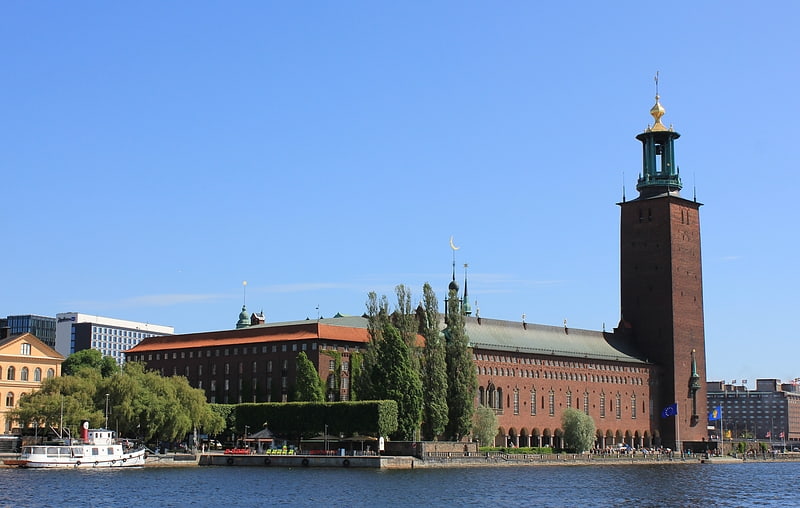
Also known as: Stockholms stadshus
Monolithic National Romantic building. Stockholm City Hall is the seat of Stockholm Municipality in Stockholm, Sweden. It stands on the eastern tip of Kungsholmen island, next to Riddarfjärden's northern shore and facing the islands of Riddarholmen and Södermalm. It houses offices and conference rooms as well as ceremonial halls. It is the venue of the Nobel Prize banquet and is one of Stockholm's major tourist attractions.[3]
Address: Hantverkargatan 1, 111 52 Stockholm (Kungsholmen)
Skansen
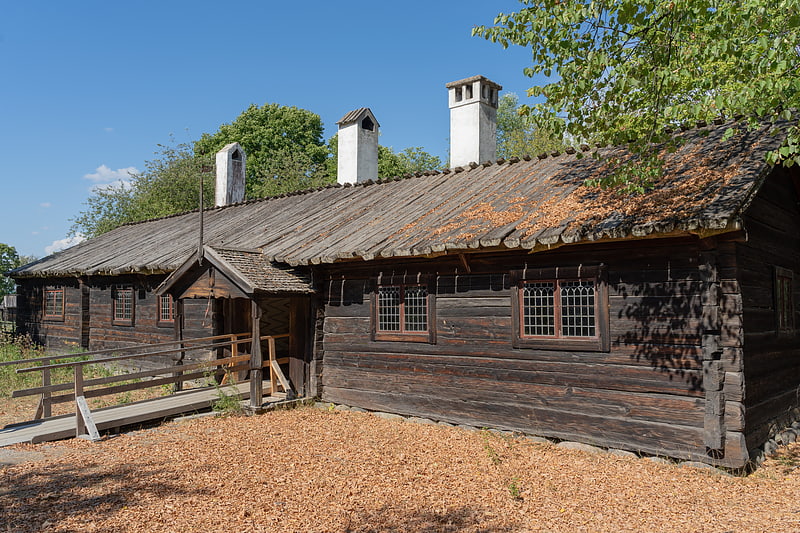
Open-air museum with farmsteads and a zoo. Skansen is the first open-air museum and zoo in Sweden located on the island Djurgården in Stockholm, Sweden. It was opened on 11 October 1891 by Artur Hazelius to show the way of life in the different parts of Sweden before the industrial era.
The name Skansen has also been used as a noun to refer to other open-air museums and collections of historic structures, particularly in Central and Eastern Europe, but also in the United States, e.g. Old World Wisconsin and Fairplay, Colorado.[4]
Address: Djurgårdsslätten 49-51, 115 21 Stockholm (Östermalm)
Drottninggatan

Street in Stockholm, Sweden. Drottninggatan in Stockholm, Sweden, is a major pedestrian street. It stretches north from the bridge Riksbron at Norrström, in the district of Norrmalm, to Observatorielunden in the district of Vasastaden.[5]
Address: Drottninggatan 65, Stockholm (Norrmalm)
Swedish National Museum of Science and Technology
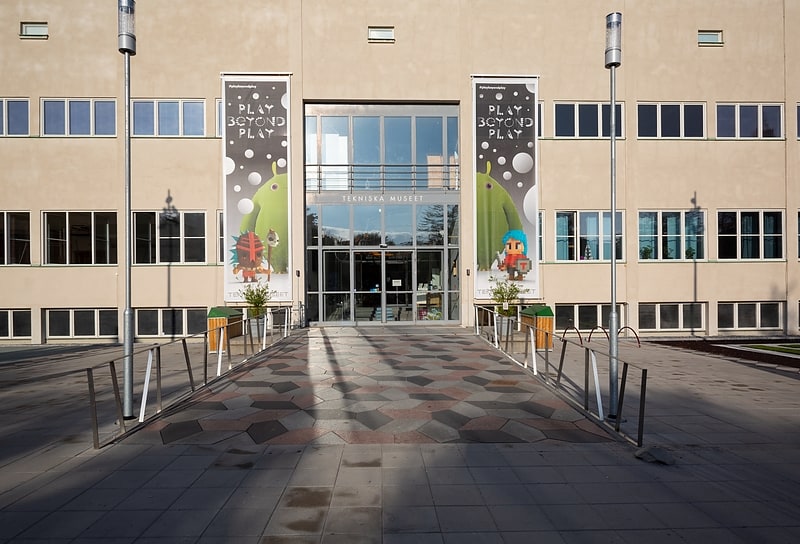
Also known as: Tekniska museet
Museum and library of science and technology. The Swedish National Museum of Science and Technology is a Swedish museum in Stockholm. It is Sweden’s largest museum of technology, and has a national charter to be responsible for preserving the Swedish cultural heritage related to technological and industrial history. Its galleries comprise around 10,000 square meters, and the museum attracts annually about 350,000 visitors. The collections consist of more than 55,000 objects and artifacts, 1 200 shelf metres of archival records and documents, 200,000 drawings, 800,000 images and about 40,000 books. The National Museum of Science and Technology also documents technologies, processes, stories and memoirs in order to preserve them for generations to come.[6]
Address: Museivägen 7, 115 27 Stockholm (Östermalm)
Nordic Museum
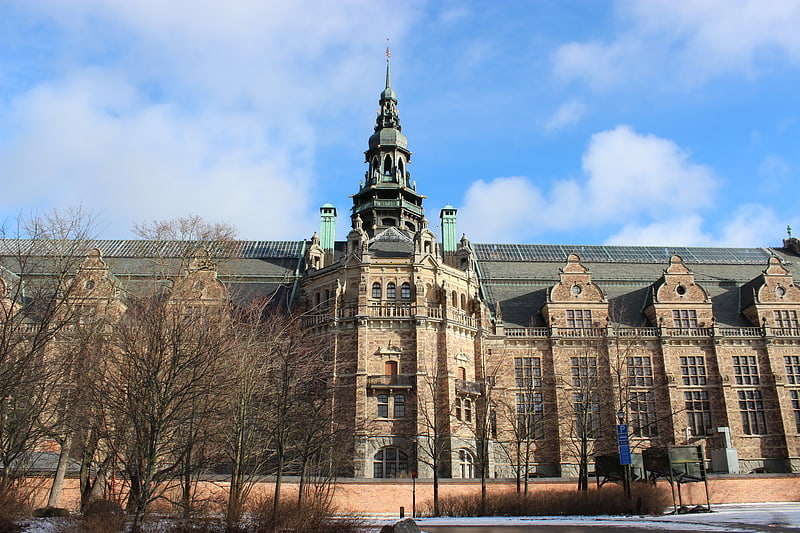
Also known as: Nordiska museet
Museum charting Swedish cultural history. The Nordic Museum is a museum located on Djurgården, an island in central Stockholm, Sweden, dedicated to the cultural history and ethnography of Sweden from the early modern period to the contemporary period. The museum was founded in the late 19th century by Artur Hazelius, who also founded the open-air museum Skansen. For long part of the museum, the institutions were made independent of each other in 1963.[7]
Address: Djurgårdsvägen 6-16, 115 93 Stockholm (Östermalm)
Millesgården
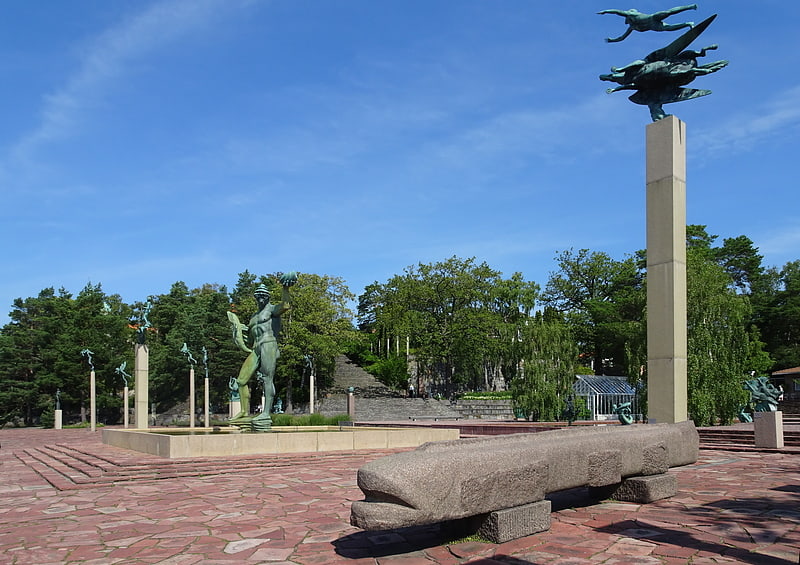
Outdoor sculpture park and museum. Millesgården is an art museum and sculpture garden, located on the island of Lidingö in Stockholm, Sweden. It is located on the grounds of the former home of sculptor Carl Milles and his wife, artist Olga Milles. Millesgården consists of three main parts: the artist's former home, an art gallery, and a sculpture park.[8]
Address: Herserudsvägen 32, 181 50 Lidingö
Drottningholm Palace Theatre
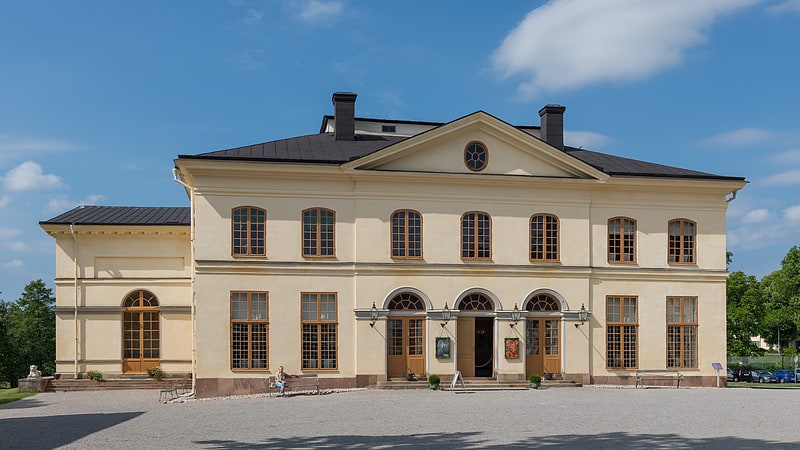
Also known as: Drottningholms slottsteater
UNESCO-listed theater built in 1766. The Drottningholm Palace Theatre is an opera house located at Drottningholm Palace in Stockholm, Sweden. It is one of the few 18th century theatres in Europe that is still used as a theatre with its original stage machinery.
Currently, the reinvigorated theatre has acquired a growing international reputation as a summer opera festival theatre by focusing on works by Haydn, Handel, Gluck and Mozart and emphasis on authentic performance. The theatre has also had guest performances by the Royal Swedish Opera.[9]
Address: Kvarnholmsvägen 56, 131 31 Ekerö
German Church
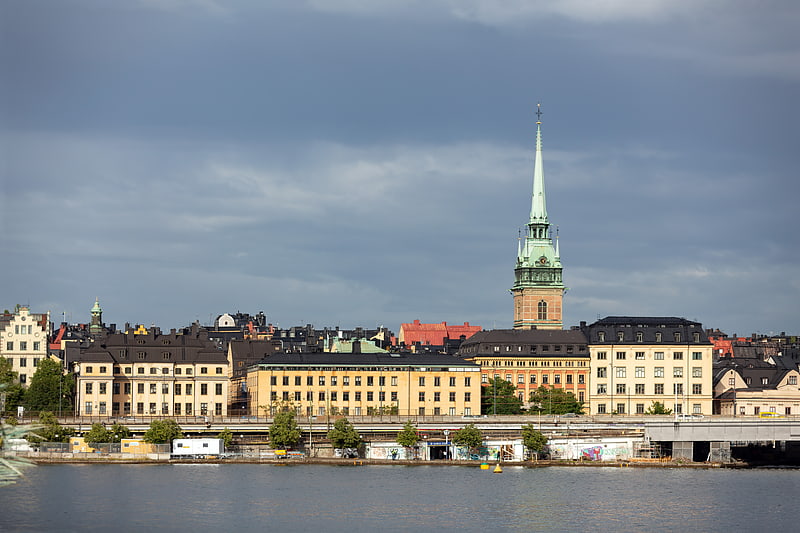
Also known as: Tyska kyrkan, Stockholm
Historic church with an opulent interior. The German Church, sometimes called St. Gertrude's Church, is a church in Gamla stan, the old town in central Stockholm, Sweden, belonging to the German Saint Gertrude Parish of the Church of Sweden.
Located between the streets Tyska Brinken, Kindstugatan, Svartmangatan, and Prästgatan, it is named for standing in the centre of a neighbourhood that in the Middle Ages was dominated by Germans. Officially named Sankta Gertrud, the church is dedicated to Saint Gertrude (626-659), abbess of the Benedictine monastery of Nivelles, in present-day Belgium, and patron saint of travellers.[10]
Address: Svartmangatan 16, 111 29 Stockholm (Södermalm)
Market
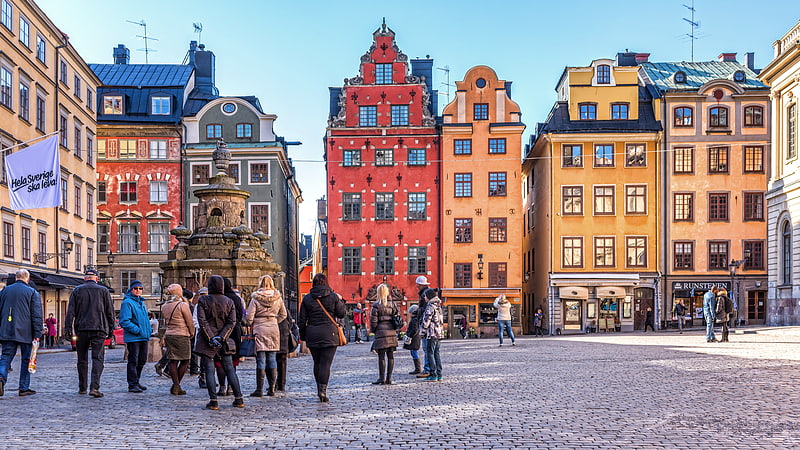
Also known as: Stortorget, Stockholm
Quaint hub of Stockholm's Old Town. Stortorget is a public square in Gamla Stan, the old town in central Stockholm, Sweden. It is the oldest square in Stockholm, the historical centre on which the medieval urban conglomeration gradually came into being. Today, the square is frequented by tens of thousands of tourists annually, and is occasionally the scene for demonstrations and performances. It is traditionally renowned for its annual Christmas market offering traditional handicrafts and food.[11]
Address: Gamla Stan, Stockholm (Södermalm)
Nationalmuseum

Museum. Nationalmuseum is the national gallery of Sweden, located on the peninsula Blasieholmen in central Stockholm.
The museum's operations stretches far beyond the borders of Blasieholmen, the nationalmuseum manage the National Portrait gallery collection at Gripshom, Gustavsbergporclain museum, a handful of castle collections and the Swedish Institute in Paris (Institut Tessin). In the summer of 2018 Nationalmuseum Jamtli opened in Östersund as a way to show a part of the collection in the north of Sweden.
The museum's benefactors include King Gustav III and Carl Gustaf Tessin. The museum was founded in 1792 as Kungliga Museet ("Royal Museum"). The present building was opened in 1866, when it was renamed the Nationalmuseum, and used as one of the buildings to hold the 1866 General Industrial Exposition of Stockholm.
The current building, built between 1844 and 1866, was inspired by North Italian Renaissance architecture. It is the design of the German architect Friedrich August Stüler, who also designed the Neues Museum in Berlin. The relatively closed exterior, gives no hint of the spacious interior dominated by the huge flight of stairs leading up to the topmost galleries.
The museum was enlarged in 1961 to accommodate the museum workshops. The present restaurant was instated in 1996. The museum building closed for renovation in 2013 and reopened on 13 October 2018. The $132 million overhaul sought to put more of the museum’s collection on display and to match the security, accessibility, fire safety and climate control of a modern institution.[12]
Address: Södra Blasieholmshamnen 2, 111 48 Stockholm (Norrmalm)
Swedish History Museum

Also known as: Statens historiska museum
Artifacts from prehistory onwards and shop. The Swedish History Museum is a museum located in Stockholm, Sweden, that covers Swedish archaeology and cultural history from the Mesolithic period to present day. Founded in 1866, it operates as a government agency and is tasked with preserving Swedish historical items as well as making knowledge about history available to the public.
The origin of the museum is the collections of art and historical objects gathered by Swedish monarchs since the 16th century. It has a number of permanent exhibitions and annually hosts special exhibitions tied to current events.[13]
Address: 13-17 Narvavaegen, 114 60 Stockholm (Östermalm)
Kungsträdgården
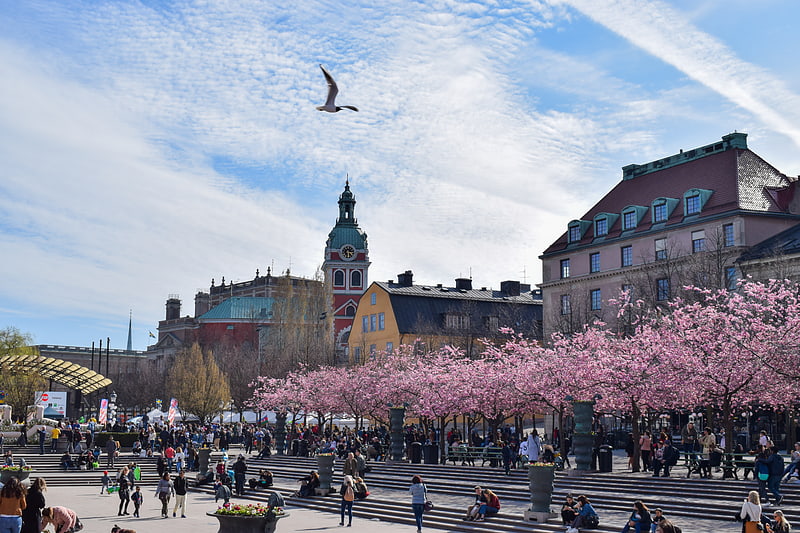
Public park in historic royal gardens. Kungsträdgården is a park in central Stockholm, Sweden. It is colloquially known as Kungsan.
The park's central location and its outdoor cafés makes it one of the most popular hangouts and meeting places in Stockholm. It also hosts open-air concerts and events in summer, while offering an ice rink during winters. There is also a number of cafés, art galleries and restaurants; for example Galleri Doktor Glas, a name taken from the novel Doctor Glas by Hjalmar Söderberg published in 1905.
The park is divided into four distinct spaces (south to north): (1) Square of Charles XII; (2) Molin's Fountain; (3); Square of Charles XIII and (4) "Fountain of Wolodarski" (which does not have an official name). The park is administered and events in it organized by the Stockholm Chamber of Commerce.[14]
Address: Jussi Bjorlings Alle 5, 111 47 Stockholm (Norrmalm)
Royal Armoury
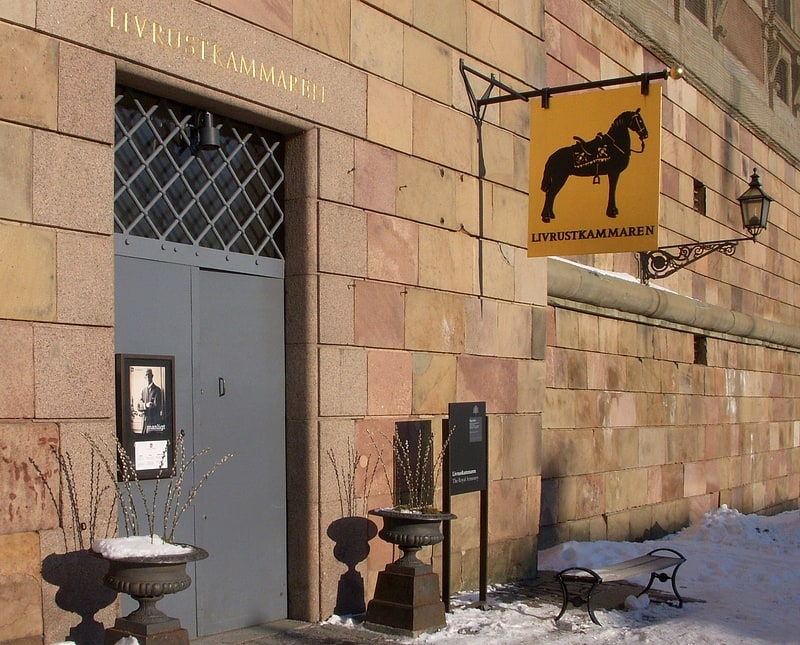
Also known as: Livrustkammaren
Royal armory and fashion history museum. The Royal Armoury is a museum in the Royal Palace in Stockholm, Sweden. It contains many artifacts of Swedish military history and Swedish royalty. It is the oldest museum in Sweden, established in 1628 by King Gustavus Adolphus when he decided that his clothes from his campaign in Poland should be preserved for posterity.
A drinking horn made from a horn of the last aurochs bull and taken by the Swedish army as war booty from Jaktorów, Poland, during the Swedish invasion of Poland (1655–1660) is part of the collection of the museum.[15]
Address: Slottsbacken 3, 111 30 Stockholm (Södermalm)
Riddarholmen Church
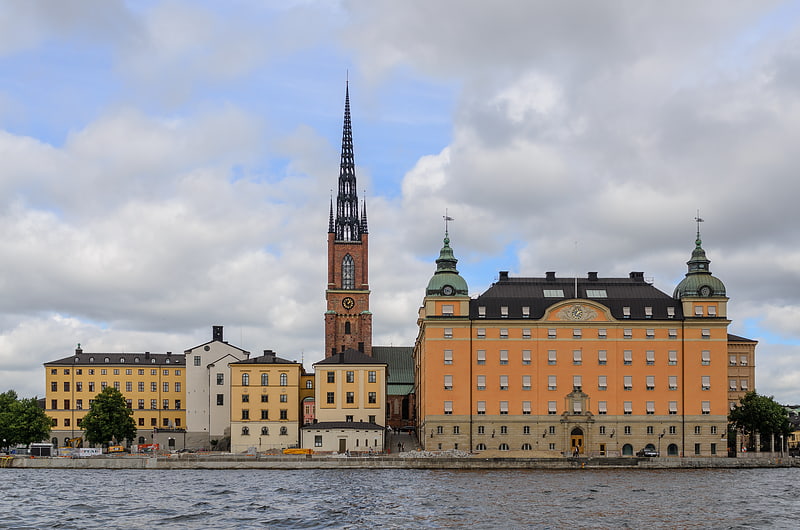
Also known as: Riddarholmskyrkan
Resting place of the Swedish monarchs. Riddarholmen Church is the church of the former medieval Greyfriars Monastery in Stockholm, Sweden. The church serves as the final resting place of most Swedish monarchs.
Riddarholmen Church is located on the island of Riddarholmen, close to the Royal Palace in Stockholm, Sweden. The congregation was dissolved in 1807 and today the church is used only for burial and commemorative purposes. Swedish monarchs from Gustavus Adolphus (d. 1632 AD) to Gustaf V (d. 1950) are entombed here (with only one exception: Queen Christina who is buried within St. Peter's Basilica in Rome), as well as the earlier monarchs Magnus III (d. 1290) and Charles VIII (d. 1470). It has been discontinued as a royal burial site in favor of the Royal Cemetery and today is run by departments of the Swedish Government and Royal Court.
It is one of the oldest buildings in Stockholm, parts of it dating to the late-13th century, when it was built as a greyfriars monastery. After the Protestant Reformation, the monastery was closed and the building became a Lutheran church. A spire designed by Flemish architect Willem Boy (1520–1592) was added during the reign of John III, but it was destroyed by a lightning strike on July 28, 1835, after which it was replaced with the present cast-iron spire.
Coats of arms of knights of the Royal Order of the Seraphim are on the walls of the church. When a knight of the Order dies, his coat of arms is hung in the church and when the funeral takes place the church's bells are rung without pause from 12:00 to 13:00.[16]
Address: Kungliga Slottet, 111 30 Stockholm, Stockholm (Södermalm)
Moderna Museet
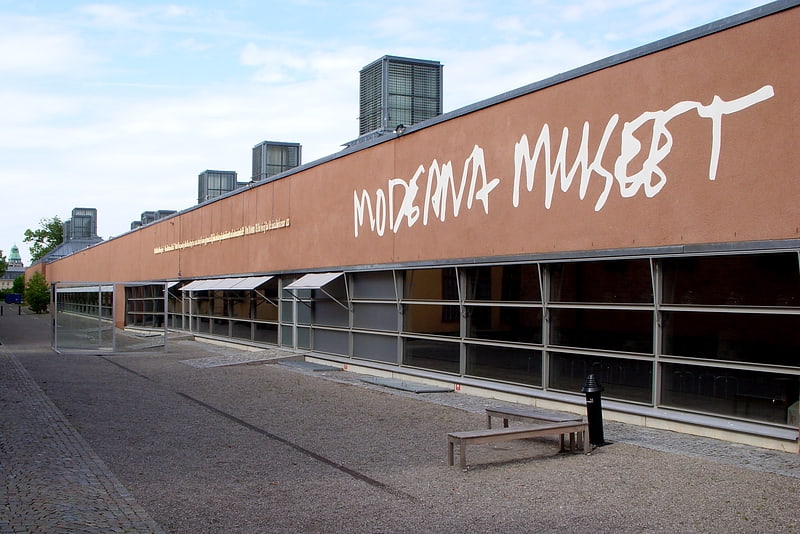
Museum in Stockholm, Sweden. Moderna Museet, Stockholm, Sweden, is a state museum for modern and contemporary art located on the island of Skeppsholmen in central Stockholm, opened in 1958. In 2009, the museum opened a new branch in Malmö in the south of Sweden, Moderna Museet Malmö.[17]
Address: Exercisplan 4, 111 49 Stockholm (Norrmalm)
Waldemarsudde

Art museum in a prince's former palace. Prins Eugens Waldemarsudde, is a museum located on Djurgården in central Stockholm. The name is composed of Waldemar, an Old German noble male name, and udde, meaning cape. It is derived from a historical name of the island Djurgården, Valmundsö[18]
Address: Prins Eugens Väg 6, 115 21 Stockholm (Östermalm)
Kvasten

Roller coaster in Stockholm, Sweden. Kvasten, "The Broom" is a steel inverted roller coaster at the Gröna Lund amusement park in Stockholm, Sweden. The ride is a Suspended Family Coaster built by Vekoma designed specifically for families.[19]
Address: Allmäna gränd 9, 115 21 Stockholm (Östermalm)
Insane
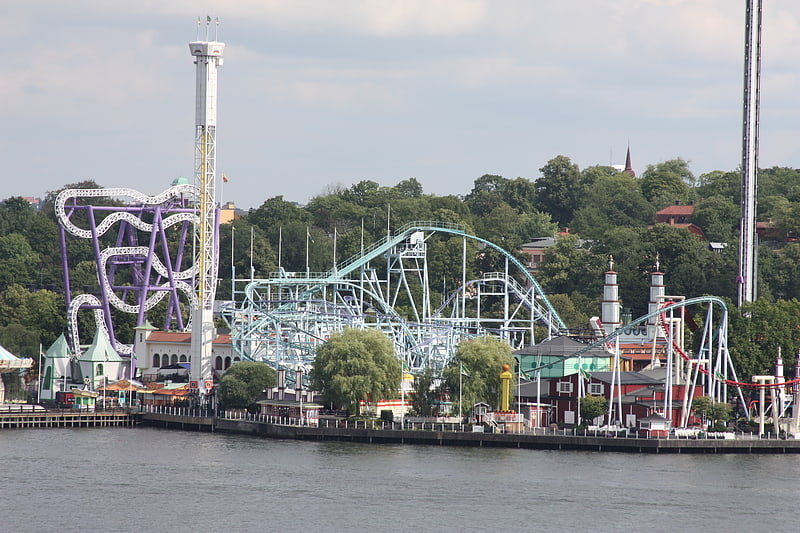
Roller coaster in Stockholm, Sweden. Insane is a roller coaster at Gröna Lund in Stockholm. Insane is an Intamin Zac-Spin roller coaster. It opened in 2009. The train cars contain 4 seats with 2 on each side. When navigating the course, the trains are free to spin and flip. In 2011, a similar roller coaster, Green Lantern: First Flight, opened at Six Flags Magic Mountain.
After the deadly incident on Inferno at Terra Mítica in Benidorm, Spain on 7 July 2014, and because the two rides share several similarities, Gröna Lund had ceased running Insane for several days before reopening the coaster.[20]
Address: Allmäna gränd 9, 115 21 Stockholm (Östermalm)
Dansmuseet
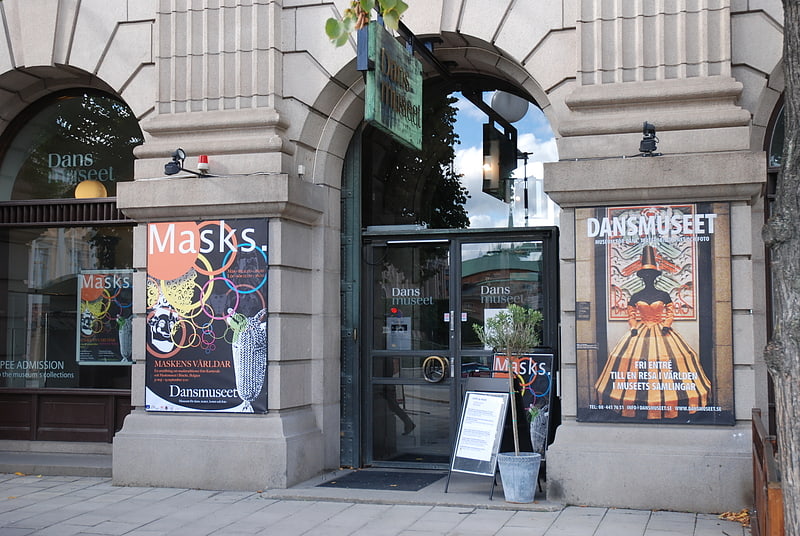
Museum in Stockholm, Sweden. Dansmuseet is a museum for the performing and visual arts located in Stockholm, Sweden. Opened in 1953 in the basement of the Royal Swedish Opera, it originally displayed a large collection of dance-related art that belonged to Rolf de Maré, a leader of the Ballets suédois in Paris from 1920 to 1925. In 1969, a library, named after the Swedish dancer, Carina Ari was endowed by Ari and attached to the museum with Bengt Hägar as its curator. The library contains the most comprehensive archive of literature on dance in Northern Europe. The museum is currently located at Drottninggatan 17. The library, receives no state funds, as it is privately endowed. The majority of its collection are materials from Western Europe which date between 1500 and 1850, a journal collection dating at the turn of the 20th century, and a video library of thousands of films. There is also a large collection of books on Russian dance. As of 2017, the director of the museum is Eva-Sofi Ernstell.[21]
Address: 17 Drottninggatan, 111 51 Stockholm (Norrmalm)
ABBA The Museum

Also known as: Abbamuseet
Memorabilia and hands-on experiences. ABBA The Museum is a Swedish interactive exhibition about the pop band ABBA that opened in Stockholm, Sweden in May 2013. ABBA's collected works are showcased in a contemporary, interactive setting at Djurgården, Stockholm.
ABBA The Museum is, despite its name, not a museum because it has no collections, does not conduct research and is for-profit. It is not a member of either Swedish ICOM or Riksförbundet Sveriges museer.[22]
Address: Djurgårdsvägen 68, 115 21 Stockholm (Östermalm)
Storkyrkan
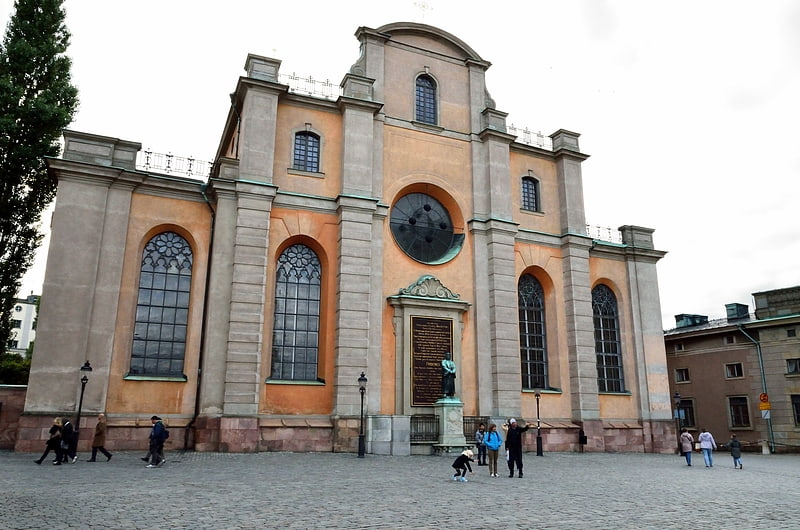
Church with George and the dragon statue. Storkyrkan, also called Stockholms domkyrka and Sankt Nikolai kyrka, is the oldest church in Stockholm. Storkyrkan lies in the centre of Stockholm in Gamla stan, between Stockholm Palace and Stortorget, the old main square of Stockholm. It was consecrated to Saint Nicholas in 1306 but construction of the church probably started in the 13th century. Inside, Storkyrkan still maintains much of its late medieval appearance in the form of a hall church with a vaulted ceiling supported by brick pillars. The exterior of the church is however uniformly Baroque in appearance, the result of extensive changes made in the 18th century. The church played an important role during the Reformation in Sweden as the place where Mass was celebrated in Swedish for the first time. It currently serves as the seat of the Bishop of Stockholm within the Church of Sweden since the creation of the Diocese of Stockholm in 1942.
Storkyrkan was for a long time the only parish church of Stockholm, and from an early date it was connected with the Swedish royal family. It has been the scene of historical events on numerous occasions, and was used as a coronation church for centuries. More recently, the wedding between Crown Princess Victoria and Daniel Westling took place in the church in 2010. Military victories as well as national tragedies have been commemorated in Storkyrkan, and it is still used for funerals of public figures such as the writers Astrid Lindgren and Sara Danius.
The church contains several important works of art as well as elaborate furnishings, among these a late medieval sculpture of Saint George and the Dragon and Vädersolstavlan, a painting which shows one of the earliest images of Stockholm.[23]
Address: Trångsund 1, 111 29 Stockholm (Södermalm)
Swedish Army Museum
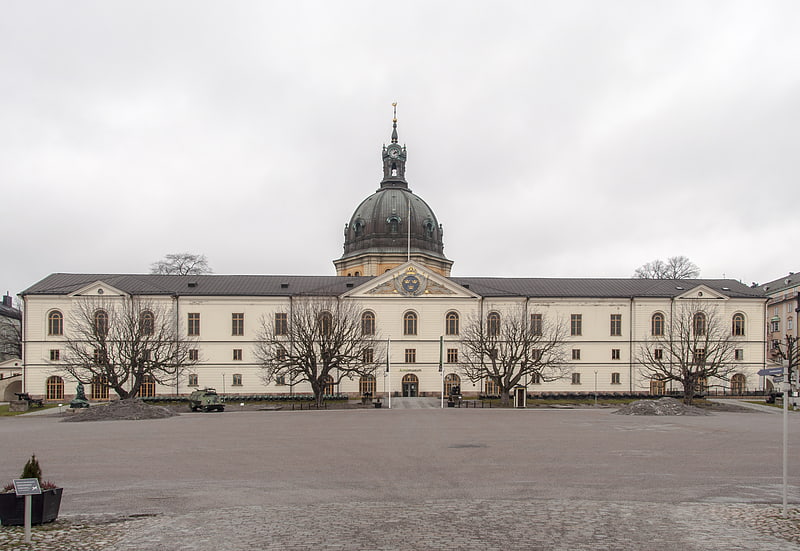
Also known as: Armémuseum
Museum with historical military displays. The Swedish Army Museum is a museum of military history located in the district of Östermalm in Stockholm. It reopened in 2002 after a long period of closure, and was awarded the title of the best museum of Stockholm in 2005. Its displays illustrate the military history of Sweden, including its modern policy of neutrality, and of the Swedish Army.[24]
Address: Riddargatan 13, 114 51 Stockholm (Östermalm)
ArkDes
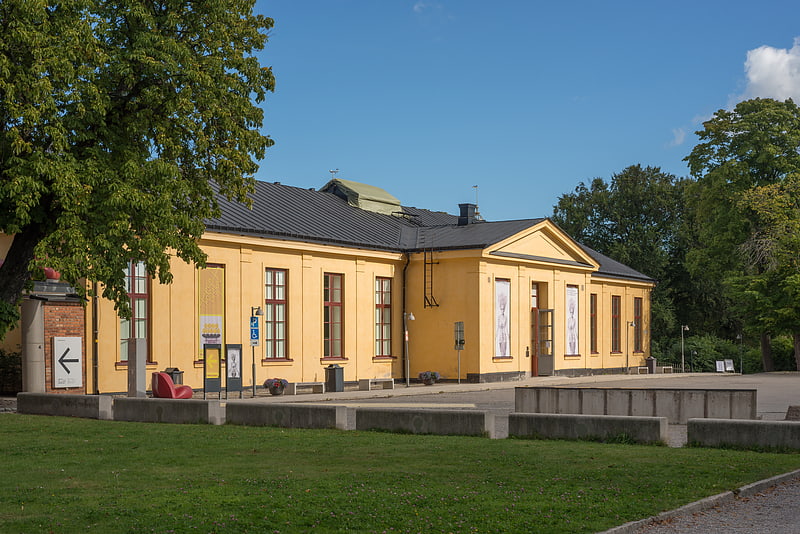
Also known as: Statens centrum för arkitektur och design
Museum in Stockholm, Sweden. The Swedish Centre for Architecture and Design or ArkDes, previously known as the Museum of Architecture, is a Swedish national museum dedicated to architecture and design. It is located on the island of Skeppsholmen in Stockholm, Sweden, in the same complex as Moderna Museet. The museum exhibits architecture, urban planning and design under its current director Kieran Long. It is an administrative authority under the Ministry of Culture.[25]
Address: Exercisplan 4, 111 49 Stockholm (Norrmalm)
Friends Arena
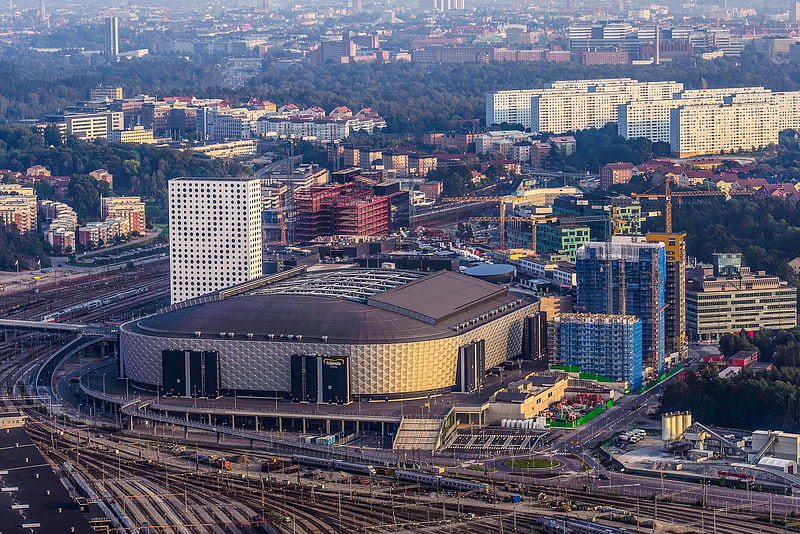
Multi-purpose stadium in Solna, Sweden. Friends Arena, also known as Nationalarenan, is a retractable roof multi-purpose stadium in Stockholm, Sweden. Located next to the lake Råstasjön in Solna, just north of the City Centre, it is the biggest stadium in Scandinavia. Since its opening, the venue has served as Sweden's national stadium for men's football, hence the name Nationalarenan. The main tenants of the stadium are Sweden's men's national football team and Allsvenskan football club AIK; both relocated from their previous home at the Råsunda Stadium. The venue has a total capacity of 65,000 at concerts and 50,000 seated at football matches, but the stadium can be scaled down to provide for smaller events with approximately 20,000 guests.[26]
Address: Friends Arena, 169 79 Solna, Stockholm
Biological museum
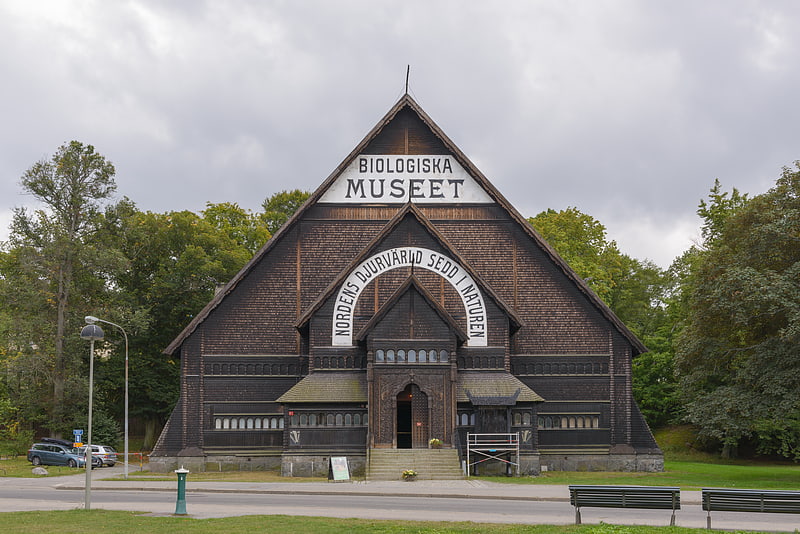
Also known as: Biologiska museet, Stockholm
Museum in Stockholm, Sweden. Biologiska museet is a museum located in Djurgården in Stockholm. It exhibits a collection of stuffed European birds and mammals in dioramas. Some of the diorama backgrounds were created by artist Bruno Liljefors, known for his dramatic paintings of Scandinavian wildlife. The museum was built in 1893 after a design by architect Agi Lindegren who was inspired by medieval Norwegian stave churches.[27]
Address: Hazeliusporten 2, 115 21 Stockholm (Östermalm)
Obelisk at Slottsbacken
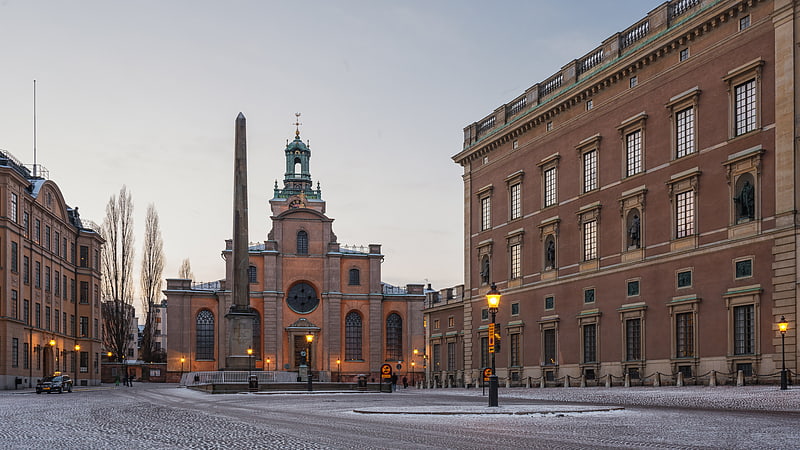
Monument in Stockholm, Sweden. The Obelisk at Slottsbacken is an obelisk monument adjacent to the Royal Palace on Slottsbacken in Old Town, Stockholm, Sweden and is considered to be the very centre point of the Swedish capital city. Unveiled in 1800, it commemorates the deeds of Stockholm's citizenry during the Russo-Swedish War. In 2017, the original obelisk was dismantled due to age- and weather-related damage and was rebuilt, using newly quarried stone, in spring 2020.[28]
Katarina Church
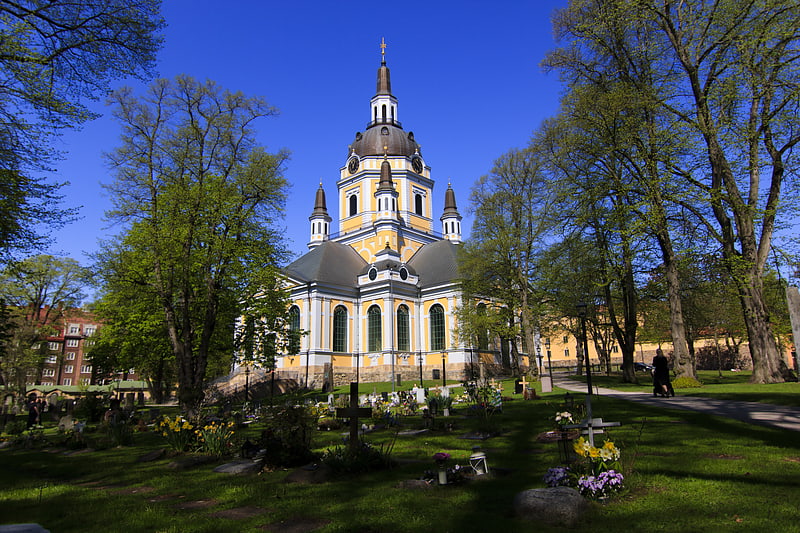
Also known as: Katarina kyrka
Church in Stockholm, Sweden. Katarina kyrka is one of the major churches in central Stockholm, Sweden. The original building was constructed 1656–1695. It has been rebuilt twice after being destroyed by fires, the second time during the 1990s. The Katarina-Sofia borough is named after Katarina Parish and the neighbouring parish of Sofia.
Construction of the church started during the reign of Charles X of Sweden, and the church is named after Princess Catherine, mother of the king, wife of John Casimir, Palsgrave of Pfalz-Zweibrücken and half-sister of Gustavus Adolphus. The original architect was Jean de la Vallée. The construction was severely delayed due to shortage of funds.
In 1723 the church, together with half of the buildings in the parish, was completely destroyed in a major fire. Rebuilding started almost immediately, under supervision of Göran Josua Adelcrantz, the city architect, who designed a larger, octagonal tower.
On May 17, 1990, the church burned down again, leaving almost nothing remaining but the external walls. Architect Ove Hidemark was responsible for rebuilding the church, which reopened in 1995. The new organ was built by J. L. van den Heuvel Orgelbouw in the Netherlands.
Several famous Swedes are buried in the cemetery surrounding the church, most notably the assassinated Foreign Minister Anna Lindh. Others include the popular Dutch-Swedish singer Cornelis Vreeswijk, as well as the former football player Sven Bergqvist, popular rapper Einar, and Sten Sture the Elder.[29]
Address: Högbergsgatan 13A, 116 20 Stockholm (Södermalm)
Museum of Far Eastern Antiquities

Also known as: Östasiatiska museet
East Asian archaeology and art museum. The Museum of Far Eastern Antiquities, located in Stockholm, Sweden, is a museum launched by Sweden's Parliament in 1926, with the Swedish archaeologist Johan Gunnar Andersson as founding director. The museum is located on Skeppsholmen in the building Tyghuset and since 1999 the museum is a part of the public Swedish National Museums of World Culture.[30]
Birger Jarlsgatan
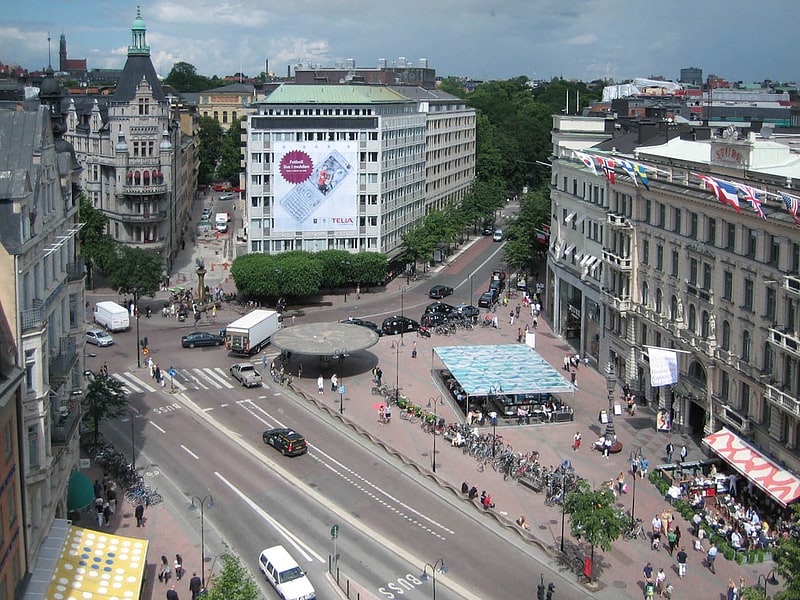
Street in Stockholm, Sweden. Birger Jarlsgatan is one of the longest streets in central Stockholm, Sweden. The street forms the border between Östermalm and the two neighbouring districts Norrmalm and Vasastaden.
It is named after Birger Jarl since 1885, then "Birger Jarls gata" (gata meaning "street"). The contemporary spelling has been used since 1932.
Stureplan and Balettakademien are situated on Birger Jarlsgatan. The street is also home to some of Stockholm's more exclusive shops, including Gucci, Max Mara, Louis Vuitton, Georg Jensen, Mulberry and Cerruti.[31]
Skeppsholmen Church
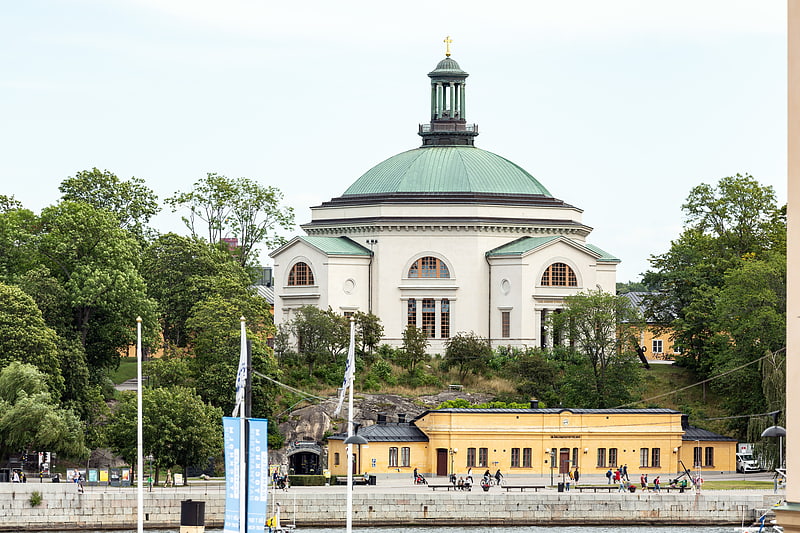
Also known as: Skeppsholmskyrkan
Church in Sweden. The Skeppsholmen Church is a former church on the islet of Skeppsholmen in central Stockholm, Sweden.[32]
Address: Kyrkslingan 2-4, Stockholm (Norrmalm)
Solvalla

Sports venue in Stockholm, Sweden. Solvalla is a horse racing track located in Bromma, Stockholm, Sweden. It opened in 1927 and is the largest harness racing venue in the Nordic countries. The last Sunday in May, Solvalla annually hosts Elitloppet, one of the most prestigious international trotting events in the world.[33]
Matchstick Palace
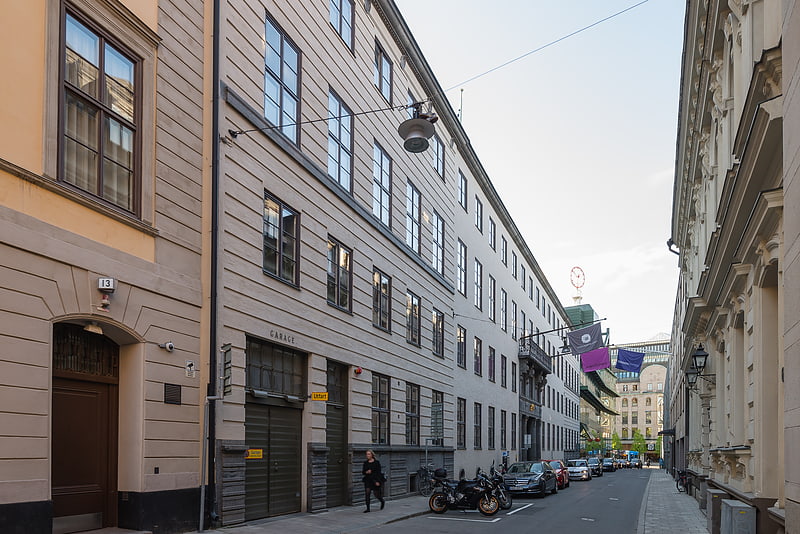
Also known as: Tändstickspalatset
Office in Stockholm, Sweden. The Matchstick Palace is an office building on Västra Trädgårdsgatan in Stockholm, Sweden.[34]
Stadshusbron

Bridge in Stockholm. Stadshusbron, formerly known as Nya Kungsholmsbron is a bridge in central Stockholm, Sweden located just north of the Stockholm City Hall. Stretching over Klara sjö, it connects mainland Norrmalm on the eastern shore to the island Kungsholmen on the western shore.
Strong population growth on Kungsholmen caused a first bridge to be built on the location in 1669–1672. It was a 500 metres long pontoon bridge forming an angle on the southern side of the strait, at the time presumably the longest bridge in Europe. It was rebuilt first in 1709 and a second time in 1766–1772. By that time, however, the strait had been made considerably narrower by land fillings. The original bridge was replaced by a steel swing bridge in 1868. In connection to the construction of the City Hall in 1917–1919, the present 19 metres wide double-leafed drawbridge was built. The drawbridge was finally closed in 1949.[35]